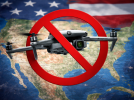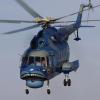Asiana A333 near Hiroshima on Aug 21st 2012, upset injures 3
On Jul 25th 2014 the JTSB released their final report concluding the probable causes of the accident were:
It is highly probable that in this accident, serious injury was sustained by a passenger walking in the rear aisle due to the severe shaking of the Aircraft, and that serious injury was sustained by another passenger seated nearby when the passenger removed the seat belt in order to help the injured passenger, the Aircraft shook severely again at that moment.
It is probable that the initial severe shaking of the Aircraft was a result of the Aircraft passing through or nearby cumulonimbus, due to the PIC and the R Captain failing to notice that the weather radar was off, and encountering atmospheric disturbances with severe changes in wind direction and speed coupled with strong updrafts. It is possible that the next shaking of the Aircraft may have been influenced by the PIC’s control operations after disengaging the A/P to stabilize the aircraft.
It is probable that the reason for the PIC and the R Captain failing to notice that the weather radar was off was that their monitoring of the weather conditions and instruments was insufficient.
The JTSB reported the flight crew comprised of three pilots: the captain in command (pic, 57, ATPL, 20,068 hours total, 5,045 hours on type), the "route captain" (r captain, 45, ATPL, 5,549 hours total, 2,433 hours on type) and the first officer (fo, 42, CPL, 1,474 hours total, 1,474 hours on type). The pic and fo were responsible to fly the aircraft from takeoff to cruise, over the Pacific Ocean the r captain and fo had flown the aircraft and while crossing Japan the pic in the left hand seat as pilot monitoring and the r captain in the right hand seat as pilot flying were at the controls of the aircraft.
While enroute over Matsue City (Japan) at FL400 the aircraft experienced a minor change of vertical acceleration prompting the crew to reduce the commanded FCU speed to 0.78 mach about 10 seconds later, the fasten seat belt signs were illuminated. The wind, that so far had blown from right aft of the aircraft at an average of 16 knots changed direction counter clockwise.
About 3 seconds later large vertical accelerations started to occur and the Static Air Temperature (SAT) began to change. The aircraft now encountered a straight head wind at 34 knots, the angle of attack increased suddenly without a pitch change, the mach speed increased to 0.872 temporarily exceeding Mmo (0.86 mach) and the overspeed warning activated. The SAT increased by 4 degrees and maintained that value for 15 seconds, the vertical acceleration increased to the maximum of +1.88G, then the wind changed again in counter clockwise direction. The aircraft settled in a climb of 3300 feet per minute, the wind changed to 20 knots left cross wind, the vertical acceleration changed to +0.04G, then the wind turned into a tailwind, the altitude deviation warning activated, the autopilot was disconnected by the pushbutton on the pic's sidestick, the pic's sidestick was moved forward. The pitch rapidly changed to 6.3 degrees nose down, the vertical acceleration became -0.09G. The tail wind picked up to 52 knots, the aircraft rolled right to 30.2 degrees and left to 17.9 degrees, the pitch angle reached a maximum of 14.8 degrees nose up while there were large side stick inputs at the pic's sidestick.
After reaching FL411 the aircraft began to descend back to FL400. About 83 seconds after the onset of the turbulence encounter the autopilot was re-engaged. The pic radioed air traffic control reporting "big turbulence" and their altitude deviation. The r captain consulted with cabin crew to assess the condition of passengers and cabin. About 10 minutes later cabin crew reported injuries of passengers and the condition of the cabin. The aircraft landed safely in Seoul about 80 minutes after the onset of the turbulence encounter.
The JTSB reported two passengers received serious and one passenger minor injuries.
The JTSB reported that the weather forecast did not indicate any significant weather along the flight path of the aircraft, however, significant weather was forecast immediately south to the planned flight track over Japan.
The JTSB analysed that the turbulence encounter was most likely caused by a strong updraft lifting the entire aircraft. The manual inputs by the pic in response to the upset possibly caused the severe shaking of the aircraft later into the turbulence encounter. The JTSB stated: "It is also probable that after this severe shaking of the aircraft, due to the large changes in wind speed and direction as well as SAT, the PIC experienced difficulties in stabilizing the Aircraft by manual control while at a high altitude and in the midst of atmospheric disturbances."
A passenger was lifted into the air, most likely at the time when the vertical acceleration changed to +0.04G, then fell down onto the floor and received a serious injury. This was observed by a flight attendant as well as another passenger, who unbuckled to help the first passenger and was lifted up into the air when the second strong jolt occurred (probably the acceleration of -0.09G caused by pic side stick input). Cabin crew were busy on holding the trolley carts down to prevent them flying through the cabin and thus were unable to make immediate announcements.
The JTSB analysed that both pic and r captain stated in their testimonies, that they did not observe any weather returns on their screens. The JTSB however stated, that according to the flight data recorder the weather radar was turned off at the time. The JTSB stated: "Because there were no malfunctions found with the Aircraft’s weather radar system, it is highly probable that if the weather radar image on the ND had been on, the operating status of the weather radar could have been confirmed even without echoes by using the ND display (e.g., radar sweep, tilt angle)."
The JTSB analysed that the notification to ATC was unacceptably delayed. The aircraft was operating in reduced vertical separation minima (RVSM) airspace, the crew, in particular the r captain, therefore was required to immediately notify of their altitude deviation as they were departing from their assigned altitude rather than only after their return to the assigned altitude.
The pic was required to use ICAO terminology to inform ATC about their turbulence encounter, in particular reporting "severe turbulence" rather than "big turbulence". The term "big turbulence" used by the pic deprived the air traffic controller of appreciating the nature of the event, so that he consequently did not alert other crews flying along the track of the severe turbulence encounter experienced.
Analysis Satellite Images 14:05Z and 15:15Z (Graphics: JTSB):
http://avherald.com/h?article=454c59ca/0000














Komentarze